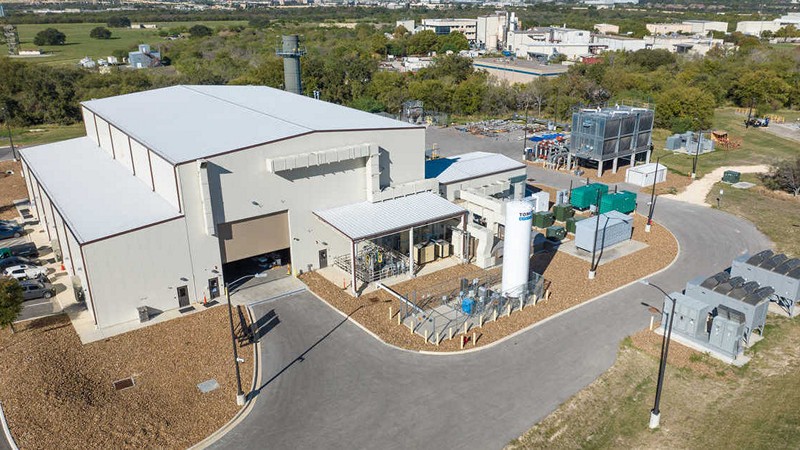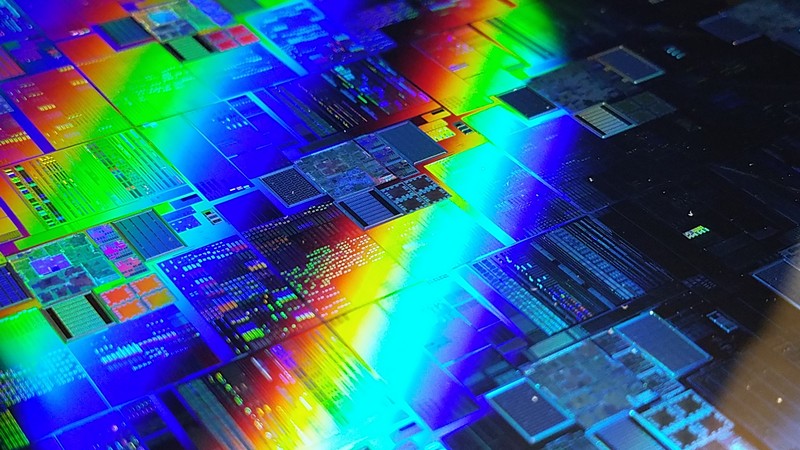
Smart meters promised a revolutionary solution to energy monitoring, but the reality has been marred by concerns of poor engineering. A recent report has unveiled a daunting prospect that up to 7 million smart meters may fail as older cellular networks are phased out. This situation has far-reaching consequences, highlighting issues related to technology obsolescence, transparency, and consumer costs. What are the financial implications and consumer concerns surrounding the potential failure of up to 7 million smart meters when 2G and 3G networks are discontinued, how do planned obsolescence and poor engineering practices manifest in various electronic applications, and what consequences do they entail for consumers, infrastructure, and technology adoption?
Top Stories This Week
- Smart Meters: The Future of Energy Or A Technological Misstep?
- Wirepas Raises $22m To Accelerate Massive IoT Drive
- Project To Make Robotics And AI Safer Secures Share Of £117m Funding
- Sale Of NHS Data Up To Government, Says Tech Boss
- Vietnam Eyes First Semiconductor Plant
- A Tiny Supercritical Carbon Dioxide Turbine Can Power 10,000 Homes
- Google Will Release Android RISC-V Emulators To Test Apps In 2024
- AI Promises Incredible Benefits, But Also Terrible Risks. It’s Not Luddism To Rein It In
- Superatomic Material Beats Silicon For Fastest Semiconductor Ever
- New Tech Turns WiFi into Motion Detecting Home Alarm System
- Beagleboard.Org Launches The Open-Hardware BeagleV-Fire
Hardware Business News
Wirepas Raises $22m To Accelerate Massive IoT Drive

Wirepas, an IoT connectivity company known for its non-cellular mesh technology tailored for industrial IoT, has successfully raised $22 million in funding to enhance its enterprise sales efforts on a global scale. Wirepas stands out for its offering of both low and high-power IoT mesh technology, touting superior scalability, reliability, and sustainability compared to standard IoT technologies. The company claims that its network can accommodate up to four billion IoT devices on a single network. What potential applications and industries can benefit most from this level of scalability, and how might it transform their operations, how has Wirepas’ mesh technology been applied across various industries, and what specific advantages has it offered to its clients?
Project To Make Robotics And AI Safer Secures Share Of £117m Funding

Robotics and artificial intelligence experts at Heriot-Watt University and the University of Edinburgh have secured funding for the UKRI Centre for Doctoral Training in Dependable and Deployable Artificial Intelligence for Robotics (CDT-D2AIR). This initiative aims to train new PhD students in verification and certification systems for robotics and AI, focusing on ensuring the safety and reliability of robotics applications in various domains, from assisting with independent living to industrial machinery. How will the CDT-D2AIR training program prepare students to address the safety challenges associated with AI and robotics, what specific skills will they acquire to ensure dependable and trustworthy systems, and how might this investment in training and research impact the development and deployment of AI and robotics in various industries?
Sale Of NHS Data Up To Government, Says Tech Boss

Palantir, a US tech firm, is seeking a contract to provide AI software for the NHS to enhance services. The company’s CEO, Alex Karp, has reassured that Palantir would not have access to the NHS data, and any decision to sell the data would be in the hands of the UK government. The NHS data is intended for use on a federated data platform to improve healthcare services. How can Palantir assure the public and stakeholders that patient data will remain secure and private when used in conjunction with AI software, what specific applications or improvements does Palantir aim to bring to the NHS using AI and data integration, and how might these advancements impact healthcare services and patient outcomes?
Vietnam Eyes First Semiconductor Plant

Vietnam is actively engaging in discussions with chip companies, aiming to increase investments in the country and potentially establish its first chip fabrication plant, according to two business executives. This effort comes despite concerns about the high costs associated with chip manufacturing, and Vietnam is already home to Intel’s largest semiconductor packaging and testing plant, working to attract more semiconductor investments including foundries. What motivated Vietnam to pursue investments in chip manufacturing, what factors, such as incentives and subsidies, are under consideration by the Vietnamese government to encourage chip companies to invest in the country, and what is the perspective of industry leaders like Synopsys and the U.S. Semiconductor Industry Association regarding Vietnam’s pursuit of chip manufacturing?
Hardware Engineering News
A Tiny Supercritical Carbon Dioxide Turbine Can Power 10,000 Homes

The landscape of power generation in the United States is gradually shifting towards cleaner and more efficient alternatives. While natural gas remains a dominant force, the emergence of competitive solar and wind resources, declining energy storage costs, and the introduction of green hydrogen are all contributing to this transformation. In this evolving energy ecosystem, the spotlight is now on supercritical carbon dioxide technology, which promises to revolutionize power generation by reducing the size of conventional turbines significantly. How does supercritical carbon dioxide (sCO2) technology differ from traditional steam-driven turbines in power generation, what advantages does it offer, especially in terms of efficiency and size reduction, and how might this technology contribute to Texas’ growing presence in renewable energy and clean technologies?
Google Will Release Android RISC-V Emulators To Test Apps In 2024

Google is making strides in the adoption of RISC-V, a free and open instruction set architecture known for its collaborative and innovative approach to hardware design. The Android team recently shared insights into their efforts to support RISC-V in Android, ensuring high performance and app compatibility. While the initial experience is in the experimental phase, Google has ambitious plans to introduce RISC-V emulators for testing applications on various device form factors, with wearables being the initial focus. What challenges are involved in achieving RISC-V optimizations in Android, how might they impact the performance of Android on RISC-V CPUs, and what are the key objectives for wearables in the context of RISC-V and android?
AI Promises Incredible Benefits, But Also Terrible Risks. It’s Not Luddism To Rein It In

The debate between tech optimists and tech pessimists about the impact of artificial intelligence (AI) is taking centre stage in discussions about our technological future. On one hand, AI holds immense potential to address pressing challenges, from medical breakthroughs to personalized education. On the other, there are significant concerns and existential risks associated with AI, including a potential lack of human control and the spread of disinformation, manipulation, and cyberattacks. As AI’s capabilities grow exponentially, there’s an urgency to implement safeguards and regulations. How can society and policymakers strike a balance between harnessing AI’s potential benefits and minimizing its existential risks, what regulatory frameworks and safeguards are necessary to ensure responsible AI development and deployment, and how can we ensure transparency and control over AI technologies, especially when it comes to autonomous AI models?
Hardware R&D News
Superatomic Material Beats Silicon For Fastest Semiconductor Ever

Recently, scientists at Columbia University have found a new semiconductor material that seems to outperform all current semiconductor technologies. Known as Re6Se8Cl2, the material is made up of a mix of rhenium, selenium, and chlorine, the atoms of which cluster together and behave like one big atom – a “superatom”, and it is this “superatom” that results in significantly greater speeds. How does the “superatomic” material Re6Se8Cl2 differ from silicon in terms of transporting energy, and what unique property contributes to its speed, despite its promising characteristics, why might it be unlikely for this material to be used in consumer goods like computer processors, and what implications does this discovery have for the development of electronic devices and potential future materials for semiconductors?
New Tech Turns WiFi into Motion Detecting Home Alarm System

Gamgee, a Netherlands-based company, is revolutionizing home security with an ingenious application of WiFi technology. Traditionally, home alarm systems rely on various sensors, cameras, and locks, but Gamgee’s WiFi Home Alarm system, which has entered the market testing phase, promises to use WiFi signals to detect motion within your home, eliminating the need for additional sensors. How does Gamgee’s WiFi Home Alarm system utilize WiFi signals and AI to distinguish and detect motion sources within a home, what opportunities does this technology present for broadband ISPs and smart home management services, and are there any potential limitations or costs associated with implementing this WiFi-based motion detection system?
Open-Source Hardware News
Beagleboard.Org Launches The Open-Hardware BeagleV-Fire

BeagleBoard.org, a pioneer in open-source single-board computers, has introduced a groundbreaking device, the BeagleV-Fire. This innovative single-board computer boasts the power of the Microchip PolarFire System on Chip (SoC), featuring four user-accessible 64-bit RISC-V cores and a flexible field-programmable gate array (FPGA) fabric. With a compact footprint, the BeagleV-Fire is set to open new avenues for digital technology enthusiasts looking to explore sensing and control applications. How does the integration of the Microchip PolarFire SoC set the BeagleV-Fire apart in the realm of single-board computers, what potential applications and projects can benefit from the BeagleV-Fire’s advanced features, including its FPGA capabilities, and how does the BeagleV-Fire’s pricing compare to other similar solutions in the market?

